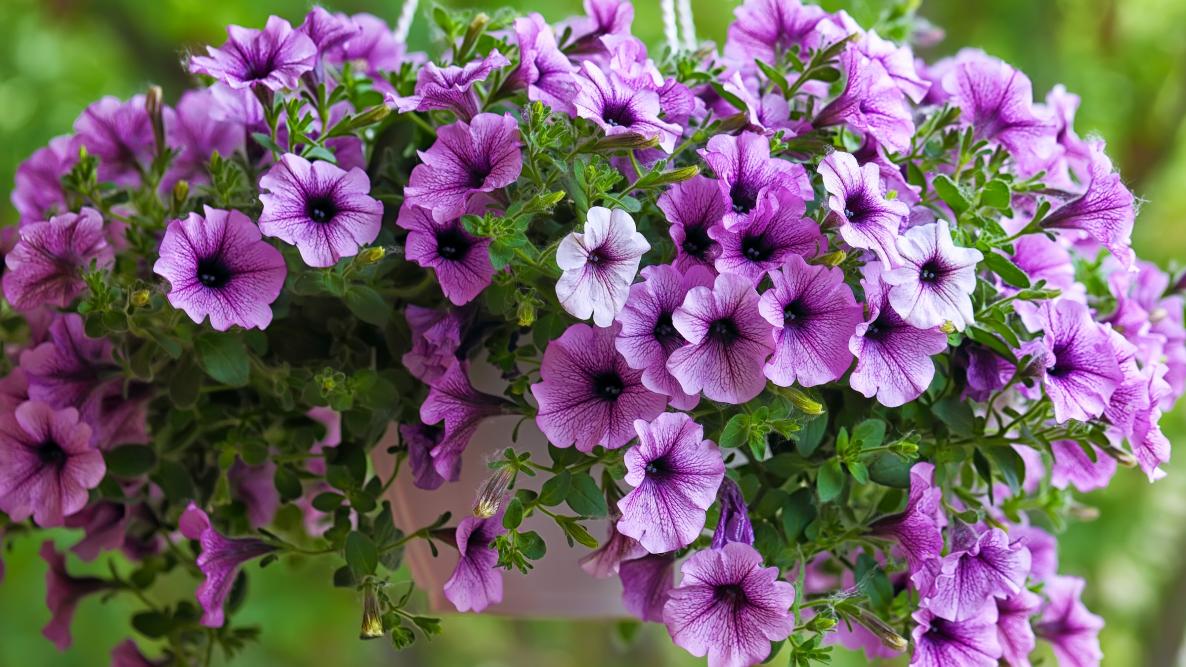Petunias, with their vibrant colors and prolific blooms, have become a cherished choice among gardeners looking to add a splash of beauty to their outdoor spaces. These popular flowering plants, native to South America, belong to the Solanaceae family and are known for their trumpet-shaped flowers that come in a wide range of hues, including pink, purple, red, white, and multicolor combinations. With their versatility and stunning display, it’s no wonder why gardeners often opt for petunias over other plants to adorn their gardens, hanging baskets, and planters.
Gardeners are drawn to petunias for several reasons. First and foremost, these flowering plants are known for their prolific blooming habit. Petunias produce an abundance of flowers throughout the growing season, providing a continuous burst of color from spring to fall. Their ability to produce large blooms in a variety of colors makes them an ideal choice for creating eye-catching floral displays. Additionally, petunias are relatively easy to grow, making them suitable for gardeners of all skill levels. They are adaptable to different growing conditions, including containers, hanging baskets, borders, and flower beds, allowing for creative and flexible design possibilities. With their remarkable beauty and versatility, it’s no wonder that petunias are a popular choice among gardeners looking to create stunning floral landscapes.
Here’s a step-by-step guide on how to get the biggest blooms on petunias in a planter:
1. Choose the right variety:
Look for petunia varieties that are specifically bred for larger blooms. Some popular choices include grandiflora petunias or cascading varieties like Surfinia or Wave petunias.
2. Select a suitable planter:
Choose a planter with good drainage holes to prevent waterlogging and ensure proper drainage. The size of the planter should be appropriate for the number of petunias you want to plant.
3. Use high-quality potting soil:
Fill the planter with a well-draining potting soil that is rich in organic matter. Avoid using garden soil, as it can be too heavy and may not provide the necessary drainage.
4. Start with healthy seedlings or young plants:
Purchase healthy and vigorous petunia seedlings or young plants from a reputable nursery or garden center. Look for plants with vibrant green foliage and no signs of pests or diseases.
5. Plant the petunias:
Dig small holes in the potting soil, spaced according to the recommended spacing for the variety you’ve chosen. Carefully remove the petunias from their containers and place them in the holes. Gently firm the soil around the roots.
6. Provide adequate sunlight:
Petunias thrive in full sun, so place the planter in a location that receives at least 6-8 hours of direct sunlight every day. Insufficient sunlight can lead to weak growth and fewer blooms.
7. Water regularly:
Keep the soil consistently moist but not waterlogged. Water the petunias thoroughly whenever the top inch of soil feels dry to the touch. Avoid overwatering, as it can cause root rot and other problems.
8. Fertilize regularly:
Petunias are heavy feeders, so it’s important to provide them with regular nutrients. Use a balanced, water-soluble fertilizer formulated for flowering plants. Follow the package instructions for application rates and frequency.
9. Pinch and prune:
To encourage bushier growth and more blooms, pinch back the tips of the petunia plants when they reach about 4-6 inches in height. This will promote branching and result in a fuller, more compact plant.
10. Deadhead spent blooms:
Remove faded or wilted flowers regularly by pinching or cutting them off. Deadheading prevents the plants from expending energy on seed production and encourages the development of new blooms.
11. Monitor for pests and diseases:
Keep an eye out for common pests like aphids, slugs, and snails. If you notice any signs of infestation or disease, take appropriate measures to control them, such as using insecticidal soap or organic pest control methods.
12. Maintain proper airflow:
Good air circulation is important for preventing fungal diseases. Avoid overcrowding the petunias in the planter, as it can lead to poor airflow. If necessary, thin out the plants or provide additional spacing.
If you want to boost the bloom production further, you can use a bloom booster fertilizer or apply a phosphorus-rich fertilizer during the flowering season. Follow the package instructions for application guidelines.
